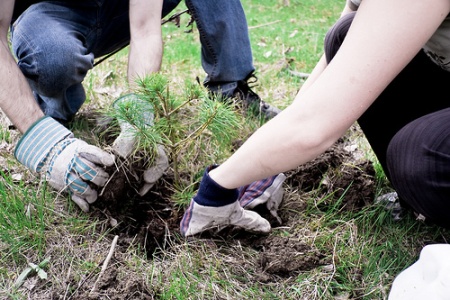
Trees are not only beautiful, they also clean the air, stabilize soil and create habitats for birds and other critters. A well-planned tree planting can reduce energy costs by shading your house in the summer and blocking cold winds in winter. There are many different tree species available at nurseries and home improvement centers, but which tree is right for your spot? In order to avoid problems down the road, it’s important to consider the characteristics of different tree species.
The Pennsylvania Horticultural Society (PHS) has developed the Plant a Tree online brochure to help you choose and plant wisely. If you’d like a deeper understanding of tree biology, proper tree care and working in your community, check out the PHS’s Tree Tenders program. Another option for Philadelphia property owners is to submit a street tree request form to Philadelphia Parks and Recreation. An arborist will check out your site and determine if your property is a good spot for one of their free street trees.
After the jump, some basic tree planting steps to get your project in the ground.
Ready to dig in? Be sure to call 811, the national “Call Before You Dig” number, to locate underground utility lines.
- Dig a hole 2-3 times the width of the root ball but the same depth as the root ball.
- Remove the container or any plastic or string around the root ball.
- Place tree in hole and keep straight. Root flare should be flush with final grade.
- Fill the hole with soil and firmly (but gently) pack the soil.
- Water thoroughly and slowly. The first year after planting, water approximately 15 gallons per week. Check soil with finger—do not water if soil is moist and cool
- Mulch around base of tree or shrub. Do not let mulch touch the base of the trunk.
- If you use stakes and wire/hose or other supports, remove them after one year so they do not cut into the trunk as it grows.